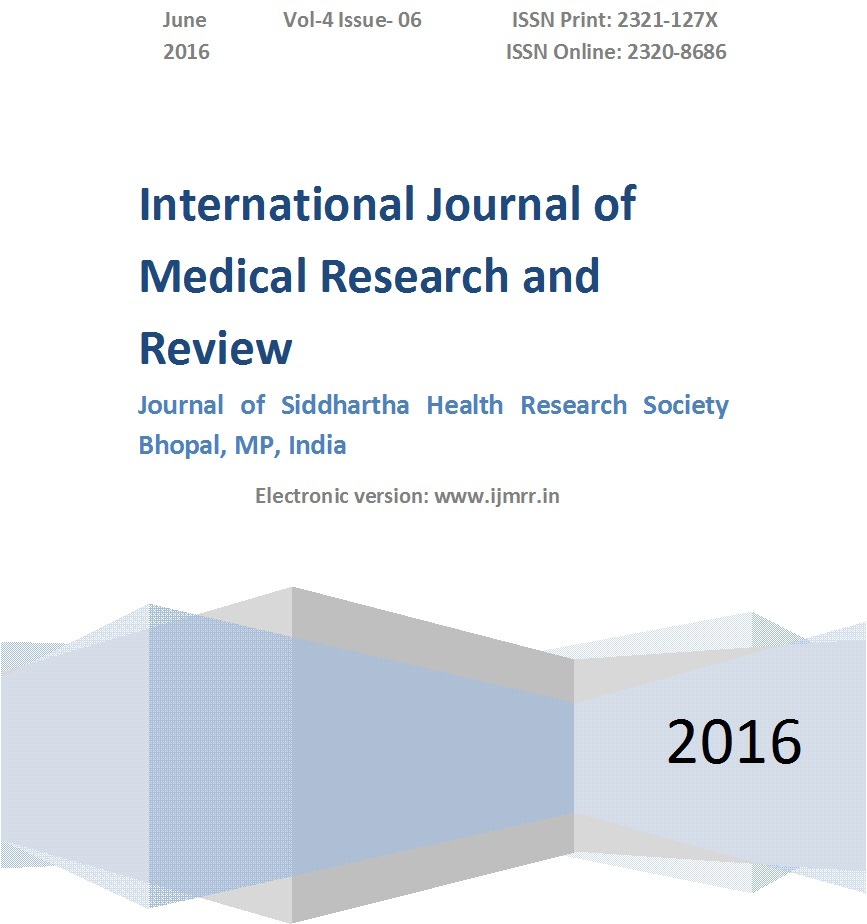H-NMR based serum metabolomic signatures imperative in retinalneurodegeneration and development of Diabetic Retinopathy
Abstract
Aim: To identify serum metabolomic fingerprints using 1H NMR in Diabetic Retinopathy (DR).
Methods and Materials: 1H-NMR was performed on 32 subjects [11 type 2 diabetic patients each without DR (group A) and with DR (group B) along with 10 control (group C)].
Results:The study unraveled 1H-NMR based serum metabolomic fingerprints of diabetic retinopathy showed significant variations in Ribitol, D-glucose, Fructose-6-phosphate, Uridine Diphosphate-N-acetyl glucosamine and Glycerophosphocholine. The study envisaged that abnormal polyol metabolism and accumulation of ribitol contributory to development of diabetic retinopathy.Presence of Uridine Diphosphate-N-acetylglucosamine in blood has been also confirmed its probable role in progressive neurodegeneration in diabetic retinopathy. NMR spectra also indicated that downregulation of glycerophosphocholine is directly related to retinol metabolism and subsequent unusual chromophore synthesis facilitating retinal degeneration.
Conclusion:Five metabolomic fingerprints have been identified and found to be unique in Diabetic Retinopathy (DR).
Downloads
References
2. Stem MS, Gardner TW. Neurodegeneration in the pathogenesis of diabetic retinopathy: molecular mechanisms and therapeutic implications.Curr Med Chem. 2013;20(26):3241-50.
3. Adopted from http://www.idf.org/media-events/press-releases/2011/diabetes-atlas-5th-edition.
4. Wang JH, Byun J, Pennathur S. Analytical approaches to metabolomics and applications to systems biology.SeminNephrol. 2010 Sep;30(5):500-11. doi: 10.1016/j.semnephrol.2010.07.007.
5. Horgan RP, Kenny LC. ‘Omic’ technologies: genomics, transcriptomics, proteomics and metabolomics.The Obstetrician & Gynaecologist2011 July; 13:189–195. doi:10.1576/toag.13.3.189.27672
6. Filla LA, Edwards JL. Metabolomics in diabetic complications.MolBiosyst. 2016 Apr 22;12(4):1090-105. doi: 10.1039/c6mb00014b. Epub 2016 Feb 19.
7. Curcio CA. Research Tissue Acquisition Working Group. Declining availability of human eye tissues forresearch. Invest Ophthalmol Vis Sci 2006 July; 47:2747-9. doi:10.1167/iovs.05-0978.
8. Sebag J, Nie S, Reiser K, Charles MA, Yu NT. Raman spectroscopy of human vitreous in proliferative diabetic retinopathy.Invest Ophthalmol Vis Sci. 1994 Jun;35(7):2976-80.
9. Barba I, Garcia-Ramírez M, Hernández C Et al. Metabolic fingerprints of proliferative diabeticretinopathy: an 1H-NMR-based metabonomic approach using vitreous humor. Invest OphthalmolVisSci 2010; 51: 4416-21.doi:10.1167/iovs.10-5348
10. Adopted from http://www.hmdb.ca/ (Human Metabolome Database).
11. Jiang Y, Zhang R, Lv H, Li J, Wang M, Chang Y, Lv W, Sheng X, Zhang J, Liu P, Zheng J, Shi M, Liu G. HGPGD: the human gene population genetic difference database.PLoS One. 2013 May 22;8(5):e64150. doi: 10.1371/journal.pone.0064150. Print 2013.
12. Lorenzi M. The polyol pathway as a mechanism for diabetic retinopathy: attractive, elusive, and resilient.Exp Diabetes Res.2007; 2007:61038. doi: 10.1155/2007/61038.
13. Jojanneke HJ, Verhoeven NM, Eduard A. Struys, GajjaSS,CornelisJakobs, Marjo S, KnaapVD, Ribose-5-Phosphate Isomerase Deficiency: New Inborn Error in the Pentose Phosphate Pathway Associated with a Slowly Progressive Leukoencephalopathy,Am J Hum Genet. 2004 Apr; 74(4): 745–751.doi: 10.1086/383204
14. Hanover JA, Krause MW, Love DC. The hexosaminesignaling pathway: O-GlcNAc cycling in feast or famine.BiochimBiophysActa. 2010 Feb;1800(2):80-95. doi: 10.1016/j.bbagen.2009.07.017. Epub 2009 Jul 30.
15. Zienab M. Osman, Anhar M. Gomaa, Hala M. Hussein, Fardos H.S. Soliman, Fardos H.S. Soliman, Amin F. El-Shobaki. Association between Retinol Metabolism and Diabetic Retinopathy Pol. J. Food Nutr. Sci. 2004;13/54 (4): 391–396.



 OAI - Open Archives Initiative
OAI - Open Archives Initiative


